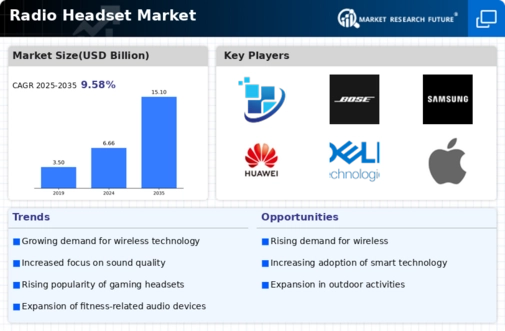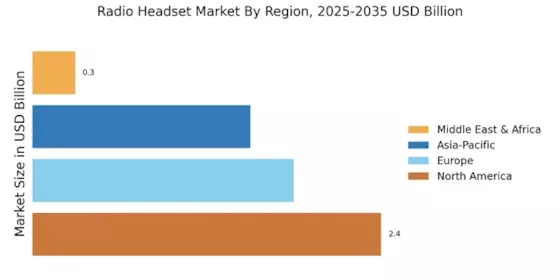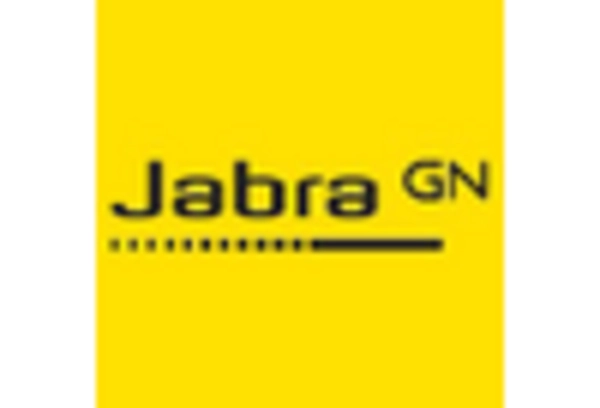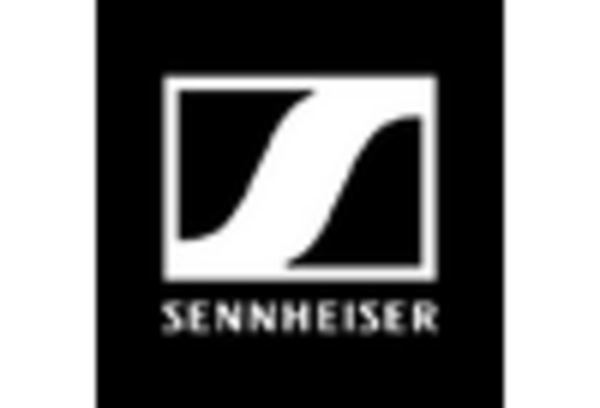Growth of Gaming and Esports
The growth of the gaming and esports sectors is emerging as a pivotal driver for the Radio Headset Market. With the increasing popularity of online gaming and competitive esports, there is a rising demand for high-quality headsets that provide immersive audio experiences. Recent statistics reveal that the gaming headset segment is projected to grow at a compound annual growth rate of around 20% over the next few years. This growth is attributed to gamers seeking headsets that offer superior sound quality, comfort, and communication capabilities. As a result, manufacturers are likely to tailor their products to meet the specific needs of gamers, thereby expanding their market presence within the Radio Headset Market.
Rising Demand for Wireless Solutions
The Radio Headset Market is experiencing a notable surge in demand for wireless solutions. This trend is primarily driven by the increasing consumer preference for convenience and mobility. As technology advances, consumers are gravitating towards headsets that offer seamless connectivity without the constraints of wires. According to recent data, the wireless segment is projected to account for over 70% of the total market share by 2026. This shift not only enhances user experience but also aligns with the growing trend of mobile device usage, as more individuals rely on smartphones and tablets for communication and entertainment. Consequently, manufacturers are focusing on developing innovative wireless technologies, which could further propel the Radio Headset Market forward.
Increased Focus on Health and Wellness
An increased focus on health and wellness is influencing consumer choices within the Radio Headset Market. As individuals become more health-conscious, there is a growing awareness of the potential negative effects of prolonged headset use. This awareness is prompting manufacturers to design headsets that prioritize ergonomics and comfort, reducing strain during extended use. Market Research Future indicates that products emphasizing health benefits are likely to capture a larger share of the market, as consumers seek headsets that not only deliver quality audio but also promote well-being. This trend may lead to innovations in materials and design, ultimately enhancing the overall user experience in the Radio Headset Market.
Expansion of Remote Work and Communication
The expansion of remote work and communication is significantly impacting the Radio Headset Market. As more companies adopt flexible work arrangements, the demand for reliable communication tools has surged. Headsets are becoming essential for virtual meetings, online collaboration, and remote learning. Recent data suggests that the market for professional headsets is expected to grow by approximately 12% annually, driven by the need for clear audio and effective communication. This trend indicates that consumers are increasingly investing in quality headsets to enhance their remote work experience. Consequently, manufacturers are likely to focus on developing headsets that cater to the specific requirements of remote workers, thereby shaping the future of the Radio Headset Market.
Integration of Advanced Audio Technologies
The integration of advanced audio technologies is significantly influencing the Radio Headset Market. Innovations such as noise cancellation, high-definition audio, and spatial sound are becoming increasingly prevalent. These features enhance the listening experience, making headsets more appealing to consumers. Market data indicates that headsets equipped with noise-canceling technology are expected to witness a growth rate of approximately 15% annually. This trend suggests that consumers are willing to invest in higher-quality audio experiences, which could lead to increased sales for manufacturers. As competition intensifies, companies are likely to prioritize research and development to incorporate these advanced technologies into their products, thereby shaping the future landscape of the Radio Headset Market.

















Leave a Comment